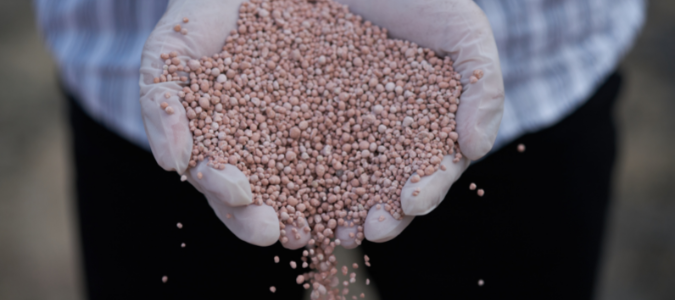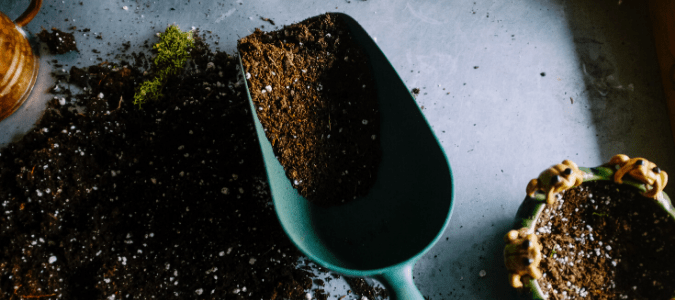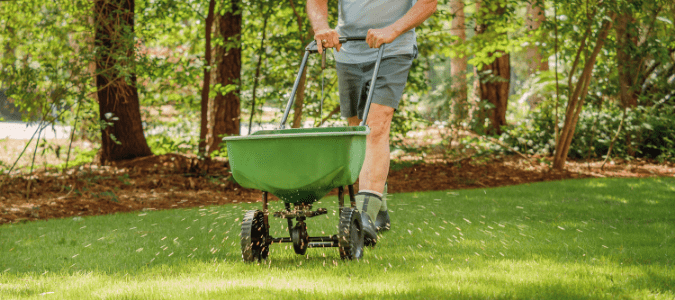Figuring out fertilization on your own without the support of a lawn care specialist can be challenging for homeowners. Fertilizers at a home and garden store include a list of numbers that homeowners may be unfamiliar with.
If all this feels a bit too overwhelming, consider reaching out to a lawn care expert. A specialist knows how to fertilize your lawn best and can put in place a lawn care schedule.
What is the N-P-K Ratio, and What Do The Numbers on Fertilizer Mean?
Many homes in the United States do not have soil that is healthy enough to sustain the perfect lawn or garden. For this reason, homeowners usually need to add nutrients to their yards.
Using natural or synthetic (chemical) fertilizer increases the nutrient count of your yard. Fertilizer works with bacteria and fungi in the soil to create an ideal environment for your plants to grow. Natural fertilizers are more effective than synthetic fertilizers, but both can benefit your lawn.
If you are shopping for fertilizer, you can find a list of the nutrients and their values on the fertilizer packaging. This is the N-P-K ratio.
Understanding the N-P-K Ratio
N-P-K is an acronym that stands for nitrogen, phosphorus and potassium. The acronym uses abbreviations from the periodic table of elements. All three of the N-P-K nutrients, in the right amount, are essential for the healthy development of your lawn.
Fertilizer packaging lists the fertilizer’s N-P-K content in percentages. These percentages reflect the weight of each nutrient in the fertilizer mixture. These numbers describe the availability of each element to nourish the growth of your lawn or plants.
Why Nitrogen, Phosphorus and Potassium Matter
The N-P-K nutrients each have their own part to play, so getting the right balance of these elements is important. There are other nutrients or fillers in fertilizer. But nitrogen, phosphorus and potassium are the most important and make up the largest amounts.
Nitrogen is often the primary ingredient in a fertilizer mix. This nutrient is necessary for green plants and leaves. Phosphorus positively impacts how deep a plant’s roots grow. Potassium is already available in many soils. Adding more potassium through the right fertilizer allows your plants to resist diseases and high temperatures.
How to Pick the Right Kind of Fertilizer
Different plants have different nutrient needs. Understanding what the numbers on fertilizer mean helps you know which type of fertilizer will work best.
If you have plants with leaves in your yard, choose a fertilizer high in nitrogen. If you are growing tomatoes in a garden on your property, phosphorus can help your plants take root. Flowers need lower nitrogen levels when it is time for them to bloom.
A soil test can determine if your yard needs fertilizer and which nutrients are needed. Experts recommend that homeowners test their soil every couple of years. Each state in the U.S. has a cooperative extension service that can help you test your soil.
The soil test results provide useful information about your soil’s pH balance. Knowing the soil’s pH balance tells you which nutrients your soil needs. pH also affects how effective your soil is at using the nutrients you add to the soil through fertilizer.
Homeowners fertilizing their lawns should follow the instructions on the fertilizer packaging. A lawn care expert with experience in turf enrichment can save you time and hassle by implementing a fertilization schedule to keep your lawn green year-round.
Do I Need Fertilizer If I Use Compost?
Both fertilizer and compost can make a big difference in the health and appearance of your lawn. Some homeowners use both of these tools to nourish their grass, gardens and plants.
The Differences Between Fertilizer and Compost
The main difference between fertilizer and compost is that all compost is made of natural materials. Fertilizer can be either natural or synthetic.
So what is compost? Simply, compost is a collection of organic matter which is dead or decaying. The natural materials which make up compost can be of plant or animal origin. Composted materials include rotting fruits or vegetables, paper, coffee or tea, egg shells and other food scraps.
Insects or microbes like fungi or bacteria break down these materials.
While you can buy fertilizer at a garden supply store, you can make compost at home by collecting food scraps. Then put these decaying materials in a compost pile. Homeowners can add leaves, dead grass or other plants to a compost pile, as long as these plants are not diseased.
Due to this do-it-yourself aspect of compost, adding compost to your yard can be more affordable than fertilizing it. Since professionals mix and prepare fertilizer, using fertilizer may be more convenient.
The Purpose of Compost and Fertilizer
Both fertilizer and compost are distributed on your lawn, around trees and plants or in your garden to help them grow. They both improve the quality of your soil by introducing beneficial nutrients to the dirt.
Compost can lower the risk of soil erosion and fend off weeds naturally. Natural fertilizers and compost are sustainable solutions to your lawn care needs. Both these methods involve recycling organic materials and returning them to the earth.
However, the length of time the composting process takes can frustrate homeowners. It also takes a while for compost to improve your lawn.
What is Slow-Release Fertilizer?
Fertilizers come in slow-release and quick-release formulas. Learning more about both types of fertilizer will help you decide which formula will work best for your lawn care needs.
Quick-Release vs. Slow-Release Fertilizer
Slow-release fertilizer can either be synthetic or organic. Either way, slow-release fertilizers gradually break down over time. They introduce nutrients to your soil more slowly than quick-release formulas.
If natural materials make up the fertilizer, nutrients enter your soil as the fertilizer mixture decays. A chemical slow-release fertilizer reacts to changes in soil temperature or moisture. They can also change due to environmental factors like sunlight and microbes. These variables impact how quickly the synthetic mixture will fertilize your lawn or garden.
Quick-release fertilizers work much faster, and they yield rapid results in lawn growth. If you need to improve the look of your lawn in a short period of time, turn to a quick-release fertilizer. Because they work so fast, these fertilizer formulas can create negative impacts in your yard.
Using a quick-release fertilizer may mean your lawn gets too much nutrition, particularly nitrogen. As a result, your grass may not develop strong roots. You could even accidentally “burn” your grass.
Quick-release fertilizer options require that you apply fertilizer more often and water your lawn more. If you have more time to reach your lawn goals, using a slow-release fertilizer is often a more sustainable approach to growing your grass.
The Benefits of a Lawn Care Specialist
If you need help picking the right fertilizer or composting, contact a lawn care professional. An expert can put the right compost and fertilizer solutions in place for you.
A lawn care specialist will be able to test your soil and determine which nutrients your yard most needs. A professional is best equipped to choose either a quick-release or slow-release fertilizer. You can rely on their expertise to get the job done right the first time. They can also schedule regular lawn care maintenance.
ABC Can Keep Your Lawn Healthy and Green
Taking care of your grass can take a lot of work. If you would rather spend your weekend enjoying your yard, contact ABC Home & Commercial Services. Our lawn care team can give you that healthy green grass you’ve been looking for. We even have a team who can refresh your landscaping!



